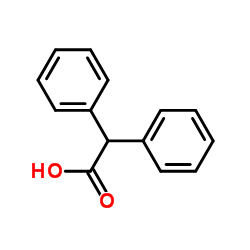Effect of renal dysfunction on the individual components of the acyl-glucuronide futile cycle.
B C Sallustio, Y J Purdie, D J Birkett, P J Meffin
文献索引:J. Pharmacol. Exp. Ther. 251(1) , 288-94, (1989)
全文:HTML全文
摘要
Drugs which are cleared predominantly by forming acyl-glucuronides undergo a futile cycle in which plasma drug clearance is a function of the formation, hydrolysis and renal clearance of the glucuronide conjugate. The effect of impaired renal function, induced by uranyl nitrate administration, on each component of this process was studied in rabbits using diphenylacetic acid. Uranyl nitrate administration produced a decrease in creatinine clearance of approximately 70% and diphenylacetic acid plasma clearance of approximately 35%. In healthy rabbits the primary determinant of diphenylacetic acid net clearance was the very large component of glucuronide renal clearance (14.10 ml/min/kg) compared with glucuronide formation (4.79 ml/min/kg) or glucuronide hydrolysis (2.56 ml/min/kg). Uranyl nitrate treatment reduced both creatinine clearance and the glucuronide renal clearance by approximately 70%. Renal dysfunction had little effect on the hydrolysis clearance of the glucuronide, but reduced its formation clearance by 22.8%. The reduction in plasma clearance of diphenylacetic acid was a function of both the decrease in glucuronidation (60% contribution) and the decrease in renal clearance of the glucuronide (40% contribution). This study supports the futile cycle mechanism of reversible glucuronide conjugation for acyl-glucuronides in general, and provides a mechanism for the impairment of the plasma clearance in renal failure of drugs forming acyl-glucuronides.
相关化合物
| 结构式 | 名称/CAS号 | 分子式 | 全部文献 |
|---|---|---|---|
 |
2,2-二苯基乙酸
CAS:117-34-0 |
C14H12O2 |
|
Condensed bridgehead nitrogen heterocyclic system: synthesis...
2008-10-01 [Eur. J. Med. Chem. 43 , 2056-66, (2008)] |
|
Two-cationic 2-methylbenzothiazole derivatives as green ligh...
2015-07-01 [Colloid Polym. Sci. 293 , 1865-1876, (2015)] |
|
Determination of adiphenine, diphenylacetic acid and diethyl...
[J. Chromatogr. A. 257(2) , 395-9, (1983)] |
|
[Effect of diphenylacetic acid on the tissues of endive and ...
1950-10-01 [C. R. Seances. Soc. Biol. Fil. 144(19-20) , 1330-2, (1950)] |